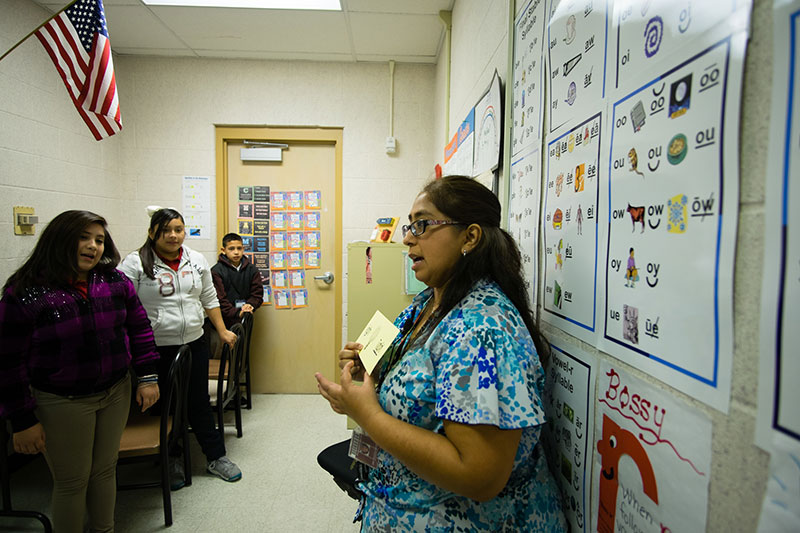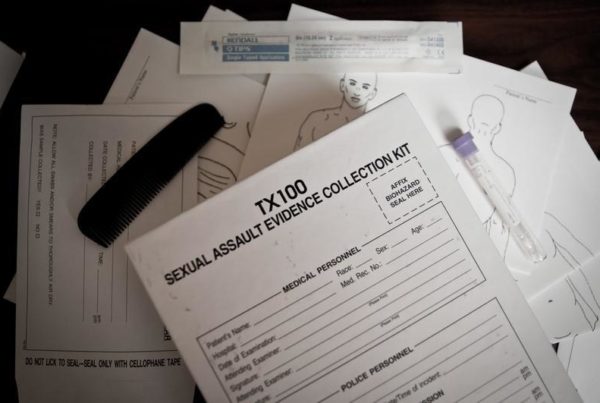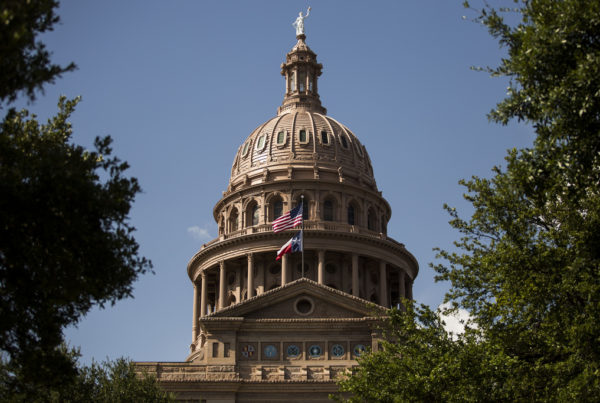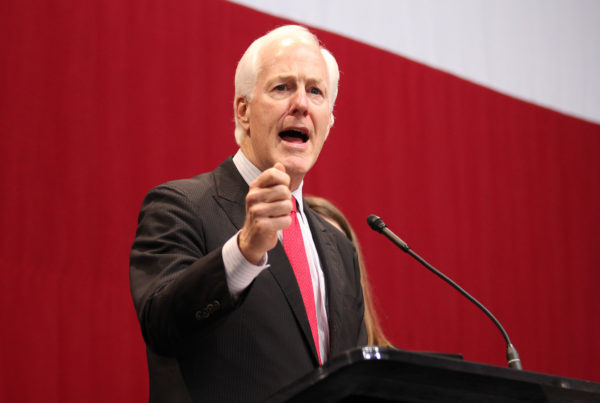Texas’ Republican leaders have declared school funding a major priority this year. But the push for reform is nothing new in Texas. In fact, some have been demanding change for more than forty years.
It started with one father in San Antonio, Demetrio Rodriguez. He took his fight for fair education for his children all the way to the U.S. Supreme Court. Today, we explore the enduring legacy of Demetrio Rodriguez’s struggle.
I first met Patty Rodriguez and her brother Alex four years ago, at her duplex home in San Antonio. To tell their dad’s story, Patty and her brother spread a pile a yellowed newspaper clippings across the kitchen table.
“It says ‘public school financing the most important issue in Texas today,’” Patty reads.
The paper shows the elementary school Alex attended in the late 1960s. He still remembers the leaky windows, how there was no air conditioning, how the third floor was condemned, and many teachers were uncertified. All this upset their father. Demetrio Rodriguez himself had to drop out after the sixth grade. Alex says his dad wanted better for his five children.
“He wasn’t just thinking about me and my brothers at that time you know he was thinking about the kids and future kids that are coming here,” Alex says. “If they were going to be where they were at, they weren’t going to get a sufficient education.”
The family lived on the west side of San Antonio, in the Edgewood school district. It was poor and mostly Mexican-American. Across town, the wealthy district of Alamo Heights had nicer buildings, more qualified teachers and charged a lower tax rate. Something didn’t add up. Patty Rodriguez says her dad teamed up with other families to investigate.
“They learned that it wasn’t the school district itself, it was the state not providing enough money,” Patty says. “So that same group of parents with including my dad decided to go ahead and file a lawsuit.”
In 1968, the parents filed a class action federal lawsuit demanding equal school funding for their children. It carried Rodriguez’ name because he was the first parent to sign. It went all the way to the U.S. Supreme Court.
Arthur Gochman was the families’ attorney.
“Are we going to have two classes of citizens minimum opportunity citizens and first class citizens?” Gochman said.
The attorney for Texas, Charles Allen Wright, admitted the state’s funding system wasn’t perfect but said it was important to keep it local.
“It ensures a basic education to every school child in the state and then lets districts if they have money and want to spend money go beyond that,” Wright said.
In a 5-to-4 vote, the Supreme Court ruled there was no right to equal school funding in the U.S. Constitution. And, in the four decades since, “Nothing changed,” Patty says.
But many have tried. I talked with Patty Rodriguez again in 2016, when some 600 Texas districts were suing the state over school finance. It was the seventh time a case like this reached the Texas Supreme Court.
Rodriguez teaches in the same Edgewood school district where her dad filed his suit. More than 90 percent of the students are poor and Hispanic. Rodriguez coaches a small group of dyslexic students on their letter sounds. They squeeze together in a windowless classroom the size of a large closet.
Rodriguez watched that last Texas lawsuit with a mix of hope and defeat.
“It’s frustrating after a while it just kind of you ask yourself Is it ever really going to change?” she says.
Patti Rodriguez admits the inequities in Edgewood aren’t as bad as when her father lost his case. But she says the schools still don’t have what they need.
“You can’t deny education to a person,” she says. “It’s discrimination. I would think that not one group of people would have a better education and another.”
She had hoped that lawsuit would settle the question of fair funding for Texas schools once and for all. But the state Supreme Court found that while the system was imperfect, it was still constitutional and left it up to lawmakers to fix. And now, in 2019, they’re trying to do that again.
















